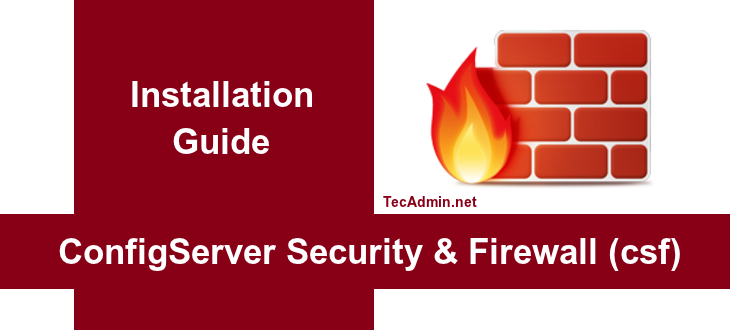MEAN is a full-stack JavaScript-based framework, which accelerates web application development much faster than other frameworks. This tutorial will help you to install Mean stack on Ubuntu, Debian and LinuxMint systems. MEAN.IO have following requirements, to be pre-installed on the system. Node.js MongoDB Git client Prerequsities First of all, install Nodejs and NPM on your system by running the following commands on your system. curl -sL https://deb.nodesource.com/setup_10.x | sudo bash – sudo apt-get install nodejs Now execute the following commands to install MongoDB on your system. Visit here for detailed installation instructions about latest mongodb. sudo apt-get install mongodb mongodb-server…
Author: Rahul
In our earlier tutorial we had discussed about SSMTP for sending email through SMTP server via command line. This tutorial makes this process much easier using the sendemail command-line utility. SendEmail is a Lightweight command line SMTP email client for sending emails through the SMTP server. In this article, we have described how to install sendemail package and a few examples for sending email through remote SMTP servers like Gmail. Install SendEmail Package SendEmail SMTP client is available under default Ubuntu repositories, Use the following commands to install it. sudo apt-get update sudo apt-get install sendemail Send Email through SMTP…
In the world of mobile application development, Apache Cordova stands out as a remarkable framework that enables developers to build mobile apps using HTML, CSS, and JavaScript. This guide is tailored for beginners and will walk you through the process of setting up Cordova on two popular Linux distributions: Ubuntu and Linux Mint. By following these steps, you’ll be well on your way to creating your very own mobile applications. Prerequisites Before diving into the installation process, ensure that your system meets the following requirements: Ubuntu or Linux Mint operating system Node.js installed npm (Node Package Manager) installed Step 1:…
Laravel is a powerful and popular open-source PHP framework for creating web applications. It is the preferred choice for many developers due to its intuitive syntax, scalability, and reliability. Setting up Laravel on Ubuntu & Debian is relatively easy, and this article will walk you through the steps. Prerequisites Before we dive into setting up Laravel, let’s take a look at the prerequisites for doing so. Firstly, you will need a server running Ubuntu or Debian. You will also need to have the latest version of PHP installed on the server. Finally, you will need to install the Composer package…
Laravel is an open source PHP framework designed for the faster development of MVC web applications in PHP. This article will help you to install Laravel 8 PHP Framework on CentOS/RHEL 7 system. Step 1 – Setup Yum Repositories First of all, you need to add REMI and EPEL rpm repositories in your system. these repositories have updated packages. Use one of the below commands as per your OS version and system architecture. rpm -Uvh https://dl.fedoraproject.org/pub/epel/7/x86_64/Packages/e/epel-release-7-14.noarch.rpm rpm -Uvh http://rpms.famillecollet.com/enterprise/remi-release-7.rpm Step 2 – Install Apache, MySQL and PHP Here is short instruction for the installation of LAMP stack. Its required to…
Red Hat 8.0 beta is released now. This version is based on Fedora 28 and the upstream kernel 4.18 provides users with a stable, secure, consistent foundation. The default package manager Yum is now based on dnf to support modular content. There are many more updates available in this release. Also, many of new features have been added by the RHEL team. To read details information about changes in this release visit redhat.com official blog.
As you develop your project in Git, you may end up with a lot of untracked files in your local repository. These files can clutter up your repository and make it harder to manage. In this article, we’ll discuss how to remove untracked files from your Git repository. What are Untracked Files? Untracked files are files in your local repository that Git is not currently tracking. These files can be created by various tools, such as text editors or build tools, and may not be necessary for the project. Untracked files can be safely removed from your repository without affecting…
FFmpeg is a cross-platform solution for streaming audio and video as well as recording and conversion. Its also useful to convert multimedia files between various formats. FFmpeg includes libavcodec audio/video codec library in it. This article will describe you to how to install FFmpeg on CentOS , RHEL 7/6/5 and Fedora systems with easy steps. Also provides basic uses of ffmpeg. CentOS/RHEL uses must have enable atrpms rpm repository on his systems. 1. Install FFmpeg CentOS/RHEL and Fedora users make sure that you have enabled atrpms repository in system. Let’s begin installing FFmpeg as per your operating system. # yum…
FFmpeg is a cross-platform solution for streaming audio and video as well as recording and conversion. It’s also useful to convert multimedia files between various formats. FFmpeg includes libavcodec audio/video codec library in it. This tutorial will help you to install FFmpeg on Ubuntu 18.04 LTS & 16.04 LTS systems with easy steps. Step 1 – Setup FFmpeg PPA FFmpeg 4 is the latest available version for installation on Ubuntu. To install the latest version, you need to configure PPA on your system. Execute below command to add FFmpeg PPA on Ubuntu system. sudo add-apt-repository ppa:jonathonf/ffmpeg-4 This PPA contains packages…
ConfigServer Security & Firewall (CSF) is a popular and powerful firewall solution for Linux servers. It provides a user-friendly interface and a wide range of security features to protect your server from various threats. In this article, we will guide you through the process of installing and configuring CSF on your Linux server. Step 1: Prerequisites Before installing CSF, ensure that your server meets the following prerequisites: A Linux server running CentOS, Debian, Ubuntu, or any other compatible Linux distribution. Root access or a user account with sudo privileges. Perl installed on your server. If Perl is not installed, you…

